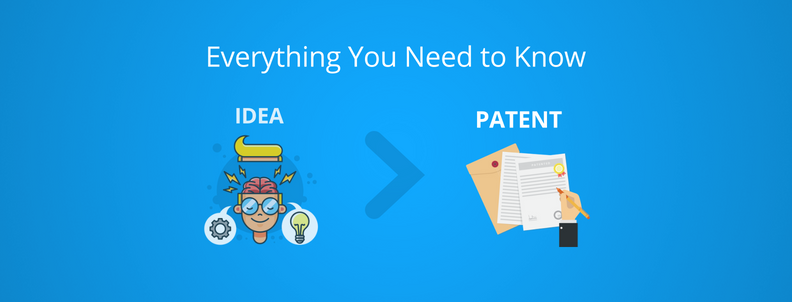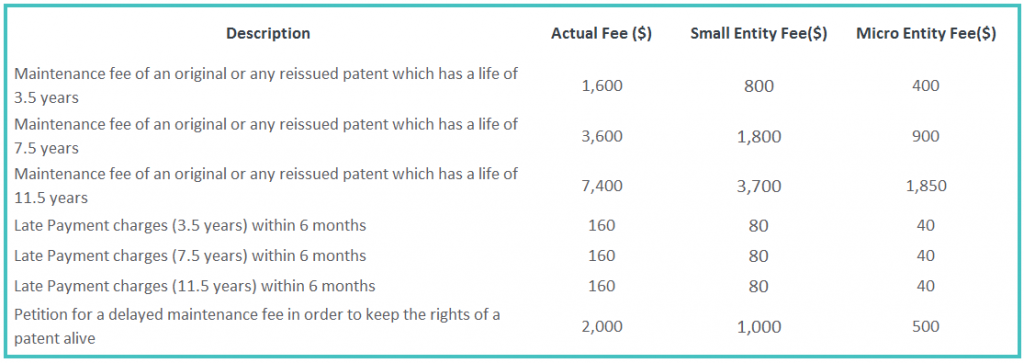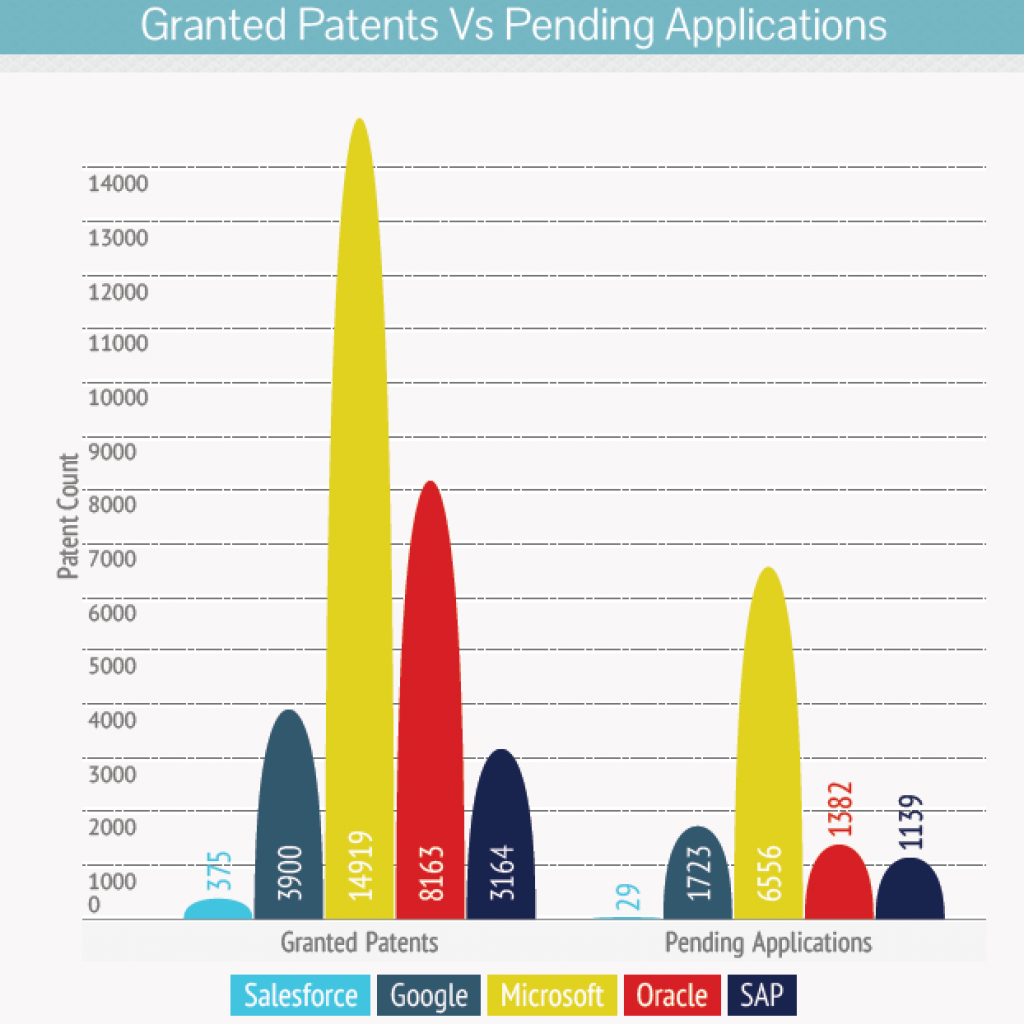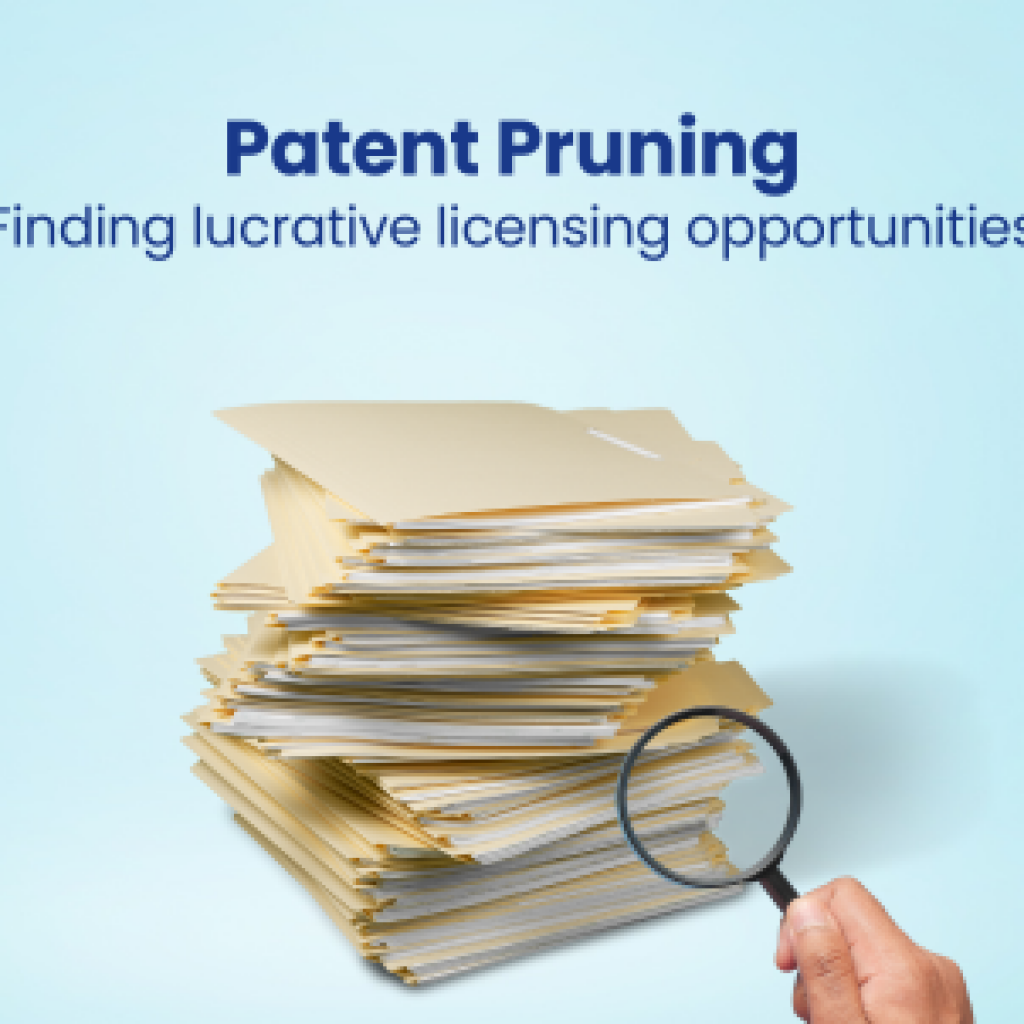Before you go running to the patent office to get a patent, there’s a lot you need to know. Getting a patent is not as simple as getting a copyright/trademark, it’s much complicated, time-consuming, and even expensive.
Before filing a patent, you ought to be aware of the nitty-gritty of patenting and patent law – the costs incurred, the need for conducting patentability searches and how to go about it, maintenance fees that ought to be paid during the lifetime of a patent, the relevance of provisional patents, and much more.
PS: At this point, we are assuming that you are aware of what is a patent, its relevance, and the different kinds that exist – Utility patents, Design patents, and Plant Patents.
Steps to Patent an Idea
There are 6 steps that can help you make your idea converting into a patent:
- Find out if your Idea/Invention really needs to be patented or not
- Conduct a patentability search to find whether your invention is patentable or not
- Find the Cost of Filing a Patent in a Particular Country
- File a Patent Provisional Application
- Submit the references as citations to let the examiner know the existing state of prior art
- File an International Patent Application with the WIPO
We have covered all these steps with detailed information below. So, let’s start with the first step.
Does my invention warrant a patent?
The answer to this question, in essence, could be found by answering a few questions (listed below), which would reveal whether your invention really needs to be patented or not.
- Is my invention of any use to society?
- Is my invention original and unique enough to acquire a patent?
- Do I have enough money, time, and patience to obtain a patent?
If your answer to all the above questions is yes, you should acquire a patent on your invention.
Now, just because you answered yes to all of these questions does not necessitate that you would actually get a patent. Your invention will only get a patent granted if it satisfies the following criteria:
- It is unique, and no one has ever before thought, created or upgraded a similar invention.
- It solves an issue and has been devised for a purpose
- It is not an obvious creation.
Now this question might occur to some of you –
How to find whether an invention is patentable or not?
In other words, how to determine the uniqueness of your idea.
The short answer is – Conducting a thorough search, which would help understand whether your idea/invention is not something that has already been/is already being worked on by anyone across the globe.
How does one go about it? You ask.
Well, there are two ways to do it. You can do it yourself or hire a patent attorney to conduct the search for you. If you are the DIY kind, self-search can be a great option, otherwise, it is always advisable to hire a patent attorney to conduct a patentability search, to ensure that your idea suffices the criteria, and thus is granted a patent.
How to conduct a patentability search by yourself?
You can conduct a patentability search by yourself, by following this step-by-step guide made available by the USPTO for patentees. Though the criteria differ slightly for patent offices of different nations, this guide can be a good starting point for your search. It is to be noted that one undergoes each and every step mentioned below to ensure a thorough search.
- Speculate your idea: Use keywords to find whether your idea has already been conceived/worked on by someone or not.
- Conduct a search on the USPTO website: Find out the categories and subcategories that are somehow related to your invention. Make sure to use specific words and umbrellas for the search under Cooperative Patent Classification (CPC)
- Scan your classification: Review and scan the classification that you are searching under CPC section.
- Review issued patents: Make sure you review all the issued patents that relate to your invention under CPC.
- Gain deeper insights through issued patents: Perform in-depth research on the patents that you think could relate to your innovation.
- Review published patent applications: After scanning your classification under CPC, find out whether any published patent applications are available for the above-mentioned classification. If yes, review them too.
- Widening the scale of search: If this still does not satisfy your inner instincts, then conducting a thorough search on other platforms/patent databases (listed below) is a good idea.
- USPTO Patent Full-Text and Image Database (PatFT)
- USPTO Patent Application Full-Text and Image Database (AppFT)
- Global Dossier
- Patent Application Information Retrieval (PAIR)
- Public Search Facility
- Patent and Trademark Resource Centers (PTRCs)
- Patent Official Gazette
- Common Citation Document (CCD)
- Search International Patent Offices
- Search Published Sequences
- Patent Assignment Research
Related Read: Different types of Patent Searches – Everything you need to know
Hiring A Patent Attorney
Self-search is considered as one of the ways for finding the uniqueness of the creation, however, hiring a patent attorney is always advisable for various reasons. One of the reasons being the vast expertise of a patent attorney, which include filing a patent in various countries keeping in mind the different set of rules for each patent and trademark office and the following cost structures.
Further, obtaining a patent has nuances attached to it and even if a minute yet essential detail is missing from the application, then chances are, your application may get rejected – due to which you will have to repeat the entire process again. Therefore, to avoid the hassle, it is better to hire a patent attorney to conduct the search on your behalf.
Hiring a patent attorney comes with its own set of pros, which include:
- Secrecy: They are bounded by law to make sure confidentiality is maintained for a client.
- A Step-by-step guide to filing an application: A lot of hassle is reduced when one knows how to file a patent quickly
- Value for money: Investing in professional assistance is never futile. It saves the resources which one would have wasted if they went the DIY way.
- Well-informed and updated: Attorneys and professionals remain at their toes to understand the effect of the changes made by patent-related verdicts every now and then. This is a major pro that makes it easier for your patent to get issued faster.
Now that the search is done and you found that your idea is patentable, the next step is filing the patent application. Before you go ahead, it is to be noted that procuring and maintaining a patent is an expensive process.
How much does it cost to file a patent?
Below is a general overview of the costs to file and obtain a patent in the US.
- Filing a utility patent along with a professional search generally costs between $5000-$15000
- Filing a design patent alone along with a professional patent search generally costs between $2600-$5000
- Filing a plant patent along with an IP professional or attorney patent search costs around $4000-$8000
Note: The cost for utility patents increases along with the complexity of the invention. For details, check out this article – Cost of a Patent in the US.
Further, to obtain a patent, one also needs to incur the following types of expenses:
- Maintenance fees (that need to be paid thrice during the lifetime of a patent)
- Professional Drawings Expense
- Patent Office Expense
We have covered all these expenses, including the amount incurred in a detailed article for every major jurisdiction across the world, including the US, Canada, China, Japan, India, and Europe. You can read the article here – Cost of filing, obtaining and maintaining a patent in major jurisdictions across the world.
Now that you are aware of the costs and have made your mind to procure a patent, here’s how to go about it. We’ll start with the basics: Filing the application.
How to File a Patent application?
It is often advised that once you have an idea, you need to file a provisional patent application, as the court gives priority to the first inventor to file in the US.
A provisional patent application, for the uninitiated, is a legal document that provides short-term security to an invention as it helps the patentee obtain the “Patent Pending” title which gives the inventor some extra time to walk the perfection path; get an opportunity to attain quick & immediate commercial promotion, and make arrangements to file a non-provisional patent application post 12 months. Generally, the cost of the same is comparatively lower when compared to a non-provisional utility patent.
It costs:
- $65 – for Micro units
- $130 – for Small units
- $260 – for Large entities
Steps to file a provisional patent application:
Filing a provisional application is much simpler, time-saving, and cost-effective as compared to filing a non-provisional application. The three major components of a provisional application are:
- A detailed description of the innovation
- Any essential drawings
- The USPTO filing fee
Detailed description of the innovation:
The following details constitute the detailed description of the innovation.
- Name of the innovation
- Need for the innovation
- Details regarding drawings
- Elements of innovation
- The process of conducting the invention
- How innovation is used in the best possible manner
- Benefits of the invention
- Best mode of innovation
Like a nonprovisional application, the names of all inventors should be disclosed while filing a provisional application.
Any Essential Drawings:
To make others understand the innovation one has to incur drawings in the application. A detailed description alone would not do. Drawings are essential if one plans to obtain a non-provisional patent in the later stages as the examiner at PTO would examine the provisional application to make sure that it is related to the same innovation.
Below is the format for professional illustrations that need to be added while filing a provisional application:
- A view from any angle (top, side, diagonal)
- Labeling Numerals (sheet, figure, reference)
- Pie-charts or flowcharts
- Broken lines or straight lines
- Colored or blank & white images
- Handwritten or electronically generated drawings
Unlike filing a provisional patent application, filing a nonprovisional application is more complex, lengthy, and intricate to file. Further, filing a nonprovisional patent involves a lot of rules and making even one single mistake could cost the inventor the grant.
On the other hand, filing a provisional application will get you a year’s period of time to understand the following three things and help determine whether to go for a nonprovisional patent or not:
- Does the invention make sense?
- Is anyone making a similar product?
- Is it worth undergoing the hassle for filing and attaining a patent?
Once you have the answers, the next step is to file a non-provisional patent application, which in simple terms means normal patent application, which when granted can get you 17 years of rights to exclude others from selling, importing or infringing on your invention.
Citations – How to cite references?
You conducted a search and came across references that are similar to your idea/ the ones you have added to in your invention. Now you would need to submit these references as citations to let the examiner know the existing state of prior art.
You could add these citations in a prescribed format. There are basically five citation styles to choose from, which are:
- APA: This citation begins with the last name followed by the first initial of the innovator. Also, the year in which it was invented is mentioned in italics.
- MLA: This has a format wherein the last name, the first name of the inventor is mentioned followed by the day-month-year format.
- Chicago: In this format, the last name is followed by the first name along with the application number and the patent number.
- ACS: It is the briefest and simplest form of citation. All it includes is the inventor’s name, the country, the application number and the year.
- CSE: There are two ways of citing an invention here. In the first one, the date is followed by the name, application number, the country, and in the second way the date is mentioned after the name, the application number, the country.
After scanning and citing the invention, one needs to figure, what kind of innovation is covered in the application and what patent is required for the same. It can be any of the following, based on what is covered in the application.
- Utility Patent: Items of manufacturing, machinery, and composition of useful matter
- Design Patent: Sketch or layout of a machinery
- Plant Patent: Discovering a new breed of plant or producing a hybrid plant
Next, you need to determine whether you want to file an international patent application or a U.S patent application will do.
What to do if you want an International Patent Application?
Office of International Patent Cooperation (OIPC) helps patentees scan their invention on an international level in the most cost-effective way.
OIPC has the following programs to help patentees obtain patent protection throughout the globe.
Collaborative Search Pilot Program: This program allows the patentee to scan their invention across the globe in multiple offices.
Cooperative Patent Classification: It is basically a merger between USPTO and European Patent Office to deliver a simplified and a common classification scheme to the patentee.
Global Dossier provides one-step access to patentees to scan their application across the five largest patent offices across the globe.
Patent Prosecution Highway has been introduced for speeding up an application process for quick possession of the patent.
International Patent Legal Administration: It assists, develops the policies and rectifies the legal issues of a patentee.
If one needs to file a patent in more than one country, they need not file it separately for each country, in fact, with the help of Patent Cooperation Treaty (also known as ‘The International Patent System’) an application can be filed collectively for obtaining patent protection in different countries.
To know the costs of obtaining a patent in major jurisdictions across the world, click here.
Now that we have gone the long way and filed the patent with the PTO, one needs to wait for the issuance of a patent. For the issuance, the patent needs to be approved from the patent office which follows a process as well.
The Patent Application Approval Process
The patent application approval process generally can be explained through these three steps:
- Examination:
Once the application is filed, it will be examined by the examiner of USPTO. If he feels any important information is missing from the application then he shall be raising one of the two notices. This notice helps to understand what missing information you need to provide, will provide you a re-submission date, and will also provide a new examination filing date.
- Prosecution:
After acquiring First Office Action from USPTO the prosecution stage begins. In order to earn easy and quick approval, make sure you undergo Request for Continuing Examination stage.
RCE is one of the best ways to speed up the pace of the examination process. One can do so using any of the three following ways
- The Premium Mode:
The most common way of accelerating the examination process is to sign up for USPTO’s “Track One” process. Here a patentee has to pay an extra application fee ranging anywhere between $1000-$4000, as a result of which their application gets ahead of all the other applications. Usually, within 12 months of filing, the application process comes to a final conclusion with the help of this mode.
- Interaction with The Examiner:
Having a direct conversation with the examiner of USPTO does surely speed up the entire process. However, the entire conversation regarding the same happens through written mode which can ultimately make a patentee impatient and depressed. Though now this mode of communication is changing and telephone or video calling is preferred by the patentee to build a relationship with the examiner.
- Patent Prosecution Highway:
Another way to accelerate the examination process is to use the ‘Patent Prosecution Highway’. Under this method, the examiner scans all the relevant information and results that have been disclosed by a foreign patent examiner while studying the application at the foreign patent office. This link covers the subject beautifully in detail. Click here to visit.
- Resolution
At this stage, all the patentee claims get approved. However, if some claims get rejected, then an applicant can always appeal for the right to amend the claim.
Rejection is a major part of obtaining a patent.
Till now, we have understood that acquiring a patent is not at all an easy job, in fact, the intricacy increases at every stage. Sometimes, in the process of obtaining the patent, most applications get rejected. Here is a list of rejections that one may undergo after filing a patent application:
- Rejection of Claims
- Rejections Disagreement with Objections
- Rejection Based on Prior Art
- Final Rejection
There is an availability of options for applicants who have received the final rejection, and they are:
Amendment: With amendment, an applicant can present the documents or crucial information that was not presented before.
Appeal: Making an appeal by issuing a note of appeal to the Patent Trial and Appeal Board after the application has been rejected twice by the examiner of USPTO.
Interview: After the final rejection, the examiner may provide a chance to the applicant to resolve the problems and resubmit the application before issuing a note of appeal.
After Final Consideration Pilot (AFCP): This is an important step taken by USPTO in order to bridge a proper communication channel between the office and the applicant. This method has resulted in a compact prosecution.
Requests for Continued Examination (RCE): This request has to be filed prior to the waiver of the application. It is a prosecution appeal done by the applicant even after attaining the final rejection.
Abandonment of The Application: Not responding within the stipulated time period or within the extended time duration results in total abandonment of the application.
Once the patent has been obtained by the applicant, there is the maintenance fee that he has to pay on a recurring basis to keep his patent rights alive.
The maintenance fees that a patentee have to pay after acquiring the patent are listed below:
Once the patent is issued in the name of the patentee then he attains an official permit to own, use, update, sell the idea or machinery or design he has acquired a patent for.
This brings us to the end of this piece: from idea to patent. Now that you are aware of all the nitty-gritty, use this information to protect your idea, in the jurisdiction of your choice. If you need more information :

Next Article – What type of Patent you want to file and its filing cost in major countries?










